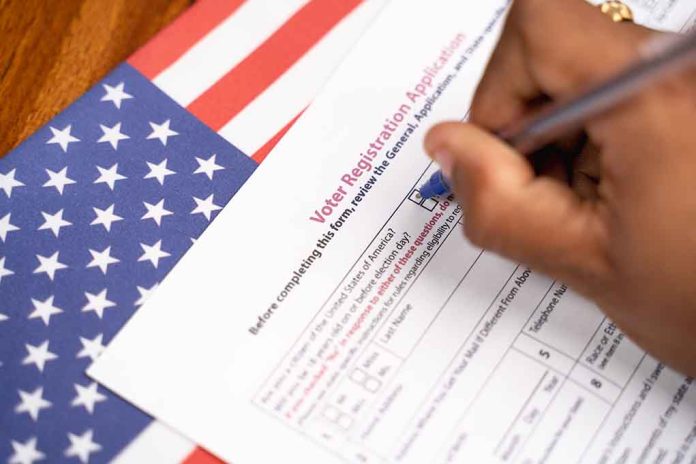
(NationRise.com) – Voting is fortunately a frequent occurrence in the United States: aside from the presidential election which occurs every four years, we have congressional elections for the Senate and House of Representatives, as well as various other local elections to select delegates and board members. By voting, you can exercise your right to be heard. Whether you’re new to voting (welcome to the process!) or have voted many times, here’s an overview of how to register to vote, and how to avoid problems and hangups at the polls. This is especially important if you’ve recently moved or move frequently, even if you stay in the same state.
Voter Registration: How To Make It Happen
The first step to registering to vote is being eligible. To do this, you must possess an ID declaring your residence and you must be 18 years of age or older on voting day.
Every state has a different voter registration process, but you can find information about your specific state and district by heading to Vote.gov. You’ll find that some states permit you to register online or by mail, but others require in-person voter registration.
If you think you’re already registered, it’s still good to confirm. You can do that online as well, and make sure you meet the specific voter ID requirements before you head ot the poll station.
Be Aware Of Your State’s Deadlines For Voter Registration
Each state has its own deadline for voter registration, and furthermore, that deadline varies by election. Generally, if you’re registered to vote for one type of election (like the general election for president, which usually includes some other votes), you are registered for future elections in your state. You can also head to your state or territory election office to get more details on your state’s deadlines.
The best way to ensure you’re registered is to register or check your registration early, whether you have registered in person, by mail, or online. You can also research who will be on the ballot and connect with your local representatives to learn more about where they stand on issues important to you.
What Happens If You Show As Not Registered?
If you show as not registered, a few things may occur. Firstly, your former area of residence may send you a card asking to confirm that you moved. If they don’t, you should contact their elections office to let them know. You’re only permitted to vote (and be registered) at one address at a time, as this prevents duplicate voting, which is illegal.
Once you’ve severed ties with your former area of residence, you should notify your new elections office of your problem. Sometimes, people register to vote or update their registration when they move via the DMV or another entity, but the information “gets lost.”
Even if you’ve done none of the above, you should still show up on voting day. Make sure you bring your ID. It’s also helpful to bring bills, such as utility bills, that prove your current residence.
In most cases, you will be permitted to vote provisionally. Following the election, the election officials will verify your residence and send you a notification (usually via snail mail) that your vote was accepted and counted, and that you are now registered at your current address. Never let anyone intimidate you into not voting simply because you aren’t registered or can’t verify your status. In many states, you can still vote provisionally and register on site, day of election.
Lastly, getting to the polls is important. Make sure you plan to vote before or after work and school, and check on the polling hours. If you’re unable to drive because you don’t have a car or are disabled, local volunteer organizations will drive you. Your friends, family members, and political party are usually willing to help you find a lift to the polls. Happy voting!
Copyright 2023, NationRise.com



